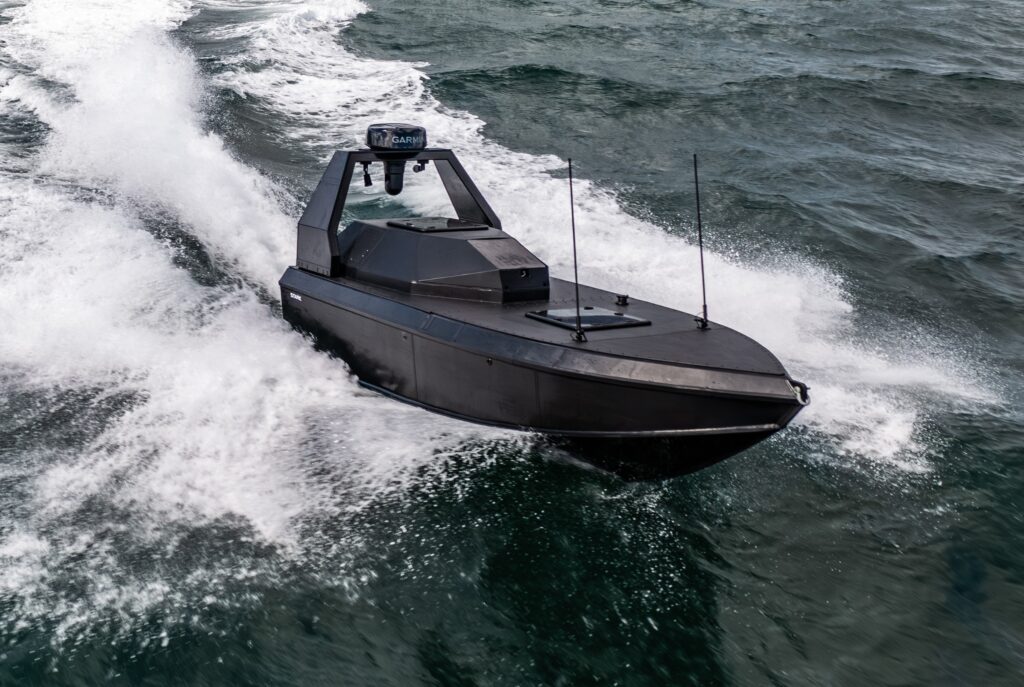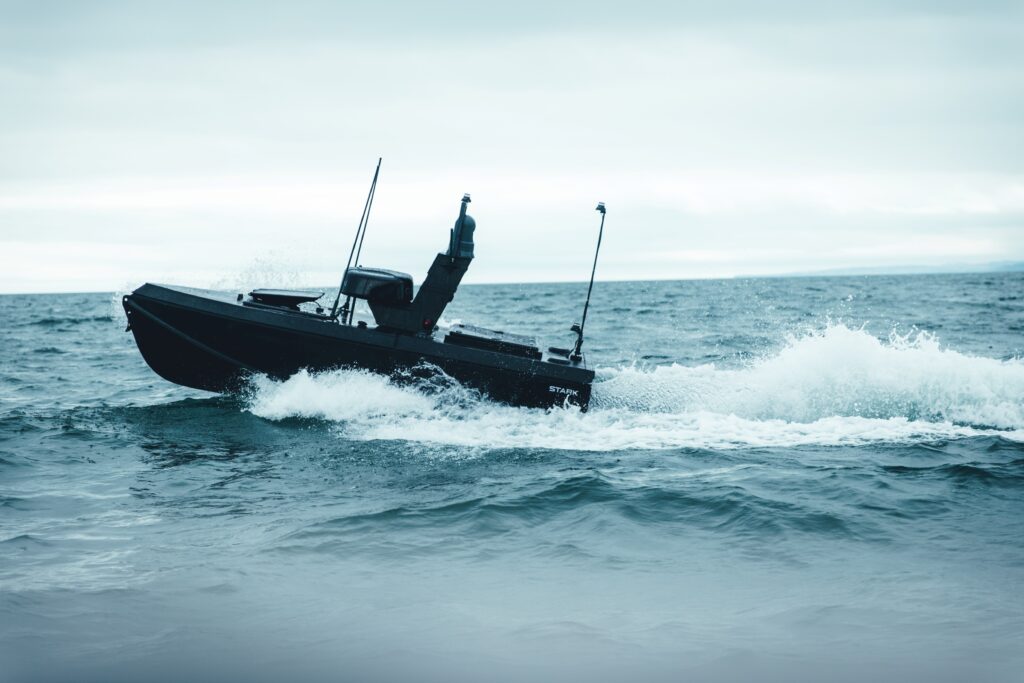Nascent Anglo-German unmanned systems specialist STARK has introduced onto the market its first unmanned surface vessels (USVs). Called the Vanta-4 and Vanta-6, the new USVs were put through their paces during NATO’s Robotic Experimentation and Prototyping Augmented by Maritime Unmanned Systems (REPMUS)/Dynamic Messenger 2025 exercises, which were held in the area around Troia, Portugal, throughout September.
During the exercises the 4 m long Vanta-4 and 6 m long Vanta-6 were tested alongside both conventional and innovative maritime assets in simulated combat scenarios. Over the course of the exercises the Vanta USVs completed serial missions daily, including escorting high-value targets, conducting harbour control operations, performing over-the-horizon investigations of contacts of interest, and carrying out nighttime intelligence, surveillance and reconnaissance (ISR) patrols.
Designed for affordable mass production, the Vanta USVs are nevertheless constructed of durable materials, allowing them to operate reliably in harsh conditions and achieve ranges up to 900 nautical miles (1667 km).
The USVs feature advanced sensor suites, including electro-optic and infrared cameras as well as a search radar, and also provide a platform for hosting modular electronic warfare systems.
Through the integration of STARK’s Minerva artificial intelligence (AI)-powered command and weapons control (CWC) system, the Vanta USVs are designed from the outset for complex, multi-domain operations, according to STARK. The Minerva system gives the vessels the capability to operate in groups, integrate with conventional maritime battle management platforms, or be deployed interoperably with reconnaissance and strike drones, such as STARK’s own Virtus vertical-take-off loitering munition.

“The sea is NATO’s next strategic battleground: 95% of data flows go through undersea cables and 90% of global trade is seaborne,” STARK stated. “NATO allies are responsible for approximately five million square kilometres of maritime waters in Europe alone. This is an area larger than the entire EU landmass, and existing naval capability gaps and personnel shortages make it impossible to safeguard without innovative technologies.”
Philip Lockwood, managing director of STARK International, was quoted as stating, “When undersea cables are cut, your banking stops working. When shipping lanes are blocked, grocery prices skyrocket. The ocean isn’t just important to our security; it is our security. This is a domain where we simply cannot afford to leave ourselves vulnerable.
“The Vanta USVs are just the start of STARK’S impact in the maritime domain,” Lockwood added. “We aim to give NATO innovative capabilities to tackle threats at sea through affordable mass: deploying large numbers of vessels to patrol wider areas of responsibility at once, ensuring continuous presence where it matters most.”
Founded in 2024, STARK was initially based in Germany, but in mid-2025 announced it had chosen the UK as its first production location outside of Germany. The company says its unmanned systems have been “created in response to critical operational demands” and “are designed to meet the realities of modern conflict: AI-enabled, software-defined and ready for affordable production at scale”.
“We believe that technological superiority and mass deployability are key to deter future aggression,” reads the company’s mission statement. “That’s why we work in close collaboration with NATO allied and partner militaries, testing our systems under real operational conditions. This user feedback drives rapid innovation to ensure we can always equip our forces with the most relevant technology.”





